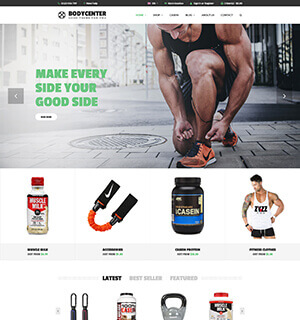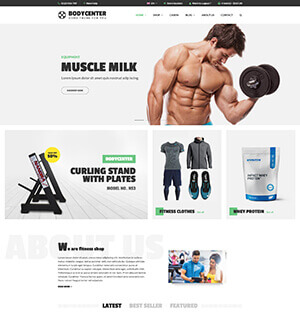DVME được thành lập bởi các thành viên có hơn mười năm kinh nghiệm làm việc và cung cấp vật tư, thiết bị cho nhiều công ty, tập đoàn tại Việt Nam. Chúng tôi hướng tới việc cung cấp các giải pháp và tư vấn chuyên nghiệp cho khách hàng đồng thời cũng là cầu nối, đại diện cho các nhà sản xuất muốn mở rộng kinh doanh tại thị trường Việt Nam.












Cast Steel Gate valve (BB)
Liên hệ
- Size: from 2″ to 96″
- Class: 150# to 2500#
- Material: ASTM A216-WCB or Equivalent, ASTM A217-WC6, WC9, C5, C12, C12A; ASTM A351-CF8, CF8M, CF3, CF3M, CN7M; ASTM A995-1A, 2A, 4A, 5A; Inconel 625, Incoloy 825, Hastelloy C, Monel, AL-BRONZE; ASME SA designation material(e.g ASME SA217-WC6).
Mô tả
FUNCTION:
Gate valve is characterized by a sliding wedge which is moved by an actuator perpendicular to the flow direction. There are a variety of valve sizes and types. The valve is used primarily as a stop valve to open or close fully. Normally it works for slurries, viscous fluid, etc., but not for throttling. The gate valve usually has a minimum pressure drop in full open and a tight seal in full close, and therefore there is little possibility that contaminants may enter the valve.
BODY AND BONNET:
The body and bonnet are designed to achieve the most uniform distribution of stress on all sides and minimum turbulence and resistance to flow. The bonnet on valve is equipped with back seat ring up to 12″ for Class 150 & 300 and up to 10″ for Class 600 or higher. The yoke is integrated with bonnet.
BODY AND BONNET JOINT:
The body-bonnet joint of gate valve is machined as follows:
Class 150 …………………………….. Plain faced
Class 300 and higher class …….. Male and female
We can supply any kind of gasket as required by customer.
WEDGE
The valve is normally supplied with a one-piece flexible wedge of which the cross-section is a tapered H shape. All wedges are fully guided. The flexible wedge is cast or machined with circumferential grooves to allow the seating faces to move independently and adjust the movement of body seat. It is used where the line load or thermal expansion of system may distort the seating face of valve, and especially useful to prevent sticking that may happen in case the valve is closed at a hot temperature and opened at a cold temperature. Ideally, the wedge is suitable for steam and other high-temperature service.
SEAT RING
The seat ring as a welded-in type is designed to prevent any turbulence and damage by corrosion.
It is forged or rolled type into one piece for all dimensions, heat treated to obtain the desired surface hardness, and cleaned thoroughly before assembling.
STEM
The stem connection to the wedge shall have an integrated tee-head (without welding)and is rectified in the packing area to ensure a long life and perfect tightness. Through experiments, we have calculated and checked the connections between stem and wedge not to disengage the stem from wedge while gate valve is working. The strength of stem and wedge connections is stronger than that of stem alone at the root of thread.
PACKING
The packing size is designed to secure maximum tightness along the stem, and the standard packing is a non-asbestos type. We can supply any kind of packing as required by customer.
YOKE SLEEVE
The yoke sleeve is designed to able to be disassembled without discounting bonnet and stem, and provided with a ball bearing of 14″ or over for Class 150 ~ 300 valves, 6″ or over for Class 600, and 2″ or over for Class 900 ~ 1500.
GLAND
The gland is made of two pieces. Packing gland is in contact with the packing which is connected to gland flange through a spherical joint. Particular design permits a correct pressure on the packing without any damage to stem due to friction or corrosion.
STUFFING BOX
The stuffing box gives maximum packing stem seal. Lantern ring and grease injector shall be furnished only if specified on the purchase order.
HANDWHEELS
Handwheels are designed for easy operation. With gearing, motor actuator, or cylinder actuator, it is also available for more difficult services.
BOLTS AND NUTS
Bolts and nuts are made from four different types of steel materials in conformity with the ASTM specification:
1) A307 Grade B: It has a minimum tensile strength of 55,000 pounds per square inch (3870kg/㎟).
The nuts normally used with machine bolts are a hot pressed steel conforming to ASTM specification A307, which is usually applied to hinge bolts and nuts.
2) A193 Grade B7/B16: It usually retains its strength well at an elevated temperature and offers higher resistance to creep than any other high-grade steel used as bolting material.
This steel is regularly used in bonnet bolts.
3) A194 Grade 2H/4: The nuts of this grade shall be re-heated above the critical range of steel, quenched in a suitable medium, and then tempered at a temperature not less than 850°F(455°C). This steel is regularly used in bonnet nuts.
4) Carbon steel: It is used in hand wheel nuts, set screws, or nipples.
END CONNECTIONS
In our standard production of valves, the flange ends(RF.FF) and the face-to-face dimensions conform to ANSI B16.5 and ASME B16.10, respectively, and they have a raised face serrated finish type or other finish types as requested.
For butt-welded ends (B.W.), of which the end-to-end dimension conforms to ASME B16.10, customer must specify the schedule type required, pipe class, or bore diameter.
Ring-type joint flanged ends (R.T.J) conform to ASME B16.5 and the end-to-end dimension follows ASME B16.10. The other special end connections may be supplied as required by customer.
GEAR OPERATED VALVE
Valve can be supplied with gear operators.
MOTOR OPERATED VALVE
Valve can be supplied with actuators, either electric or pneumatic, according to customer’s requirements.
ACCESSORIES
We can supply a valve fitted with accessories such as bypass, locking device, chain wheel, extension stem, etc.
For more details, refer to the Accessories column.
PACKING AND GASKET MATERIALS
Packing material supplied in the standard valve is non-asbestos graphite, with braided graphite rings and die-formed rings configured to provide reliable and long-lasting performance.
Braided rings are coated with zinc dust to inhibit corrosion.
Dieformed rings are 98% carbon(minimum)and have a maximum of 50PPM chloride and 550PPM sulfur content.
For standard valves, gasket materials are as follows:
Class 150 – graphite sheet type with 304 stainless steel tanged insert. (1.6mm minimum overall thickness)
Class 300 – spiral wound 304 stainless steel and graphite.
Class 600 – same as class 300 or 900
Class 900 and 1500 – Ring type joint.
SEAL AREA DESIGN
Cast steel valves are designed and manufactured to satisfy strict requirements to prevent external leakage and meet most customers’ fugitive emission requirements.
Stuffing box finishes of 63 to 125 RMS, stem finishes of 16 to 32 RMS, control of straightness and concentricity of stems, and controlled diametrical clearances between stem and gland, stem and backseat, and gland and stuffing box, all combine to guarantee consistent performance of stem seals.
Gasket surfaces between bodies and bonnets are strictly controlled to finishes of 32 to 63 AARH.
Combined with engineered bolting design, quality materials, and strict assembly procedures, these finishes guarantee consistent sealing in gasket areas.
CAST STEEL GATE VALVE














Đánh giá
Chưa có đánh giá nào.